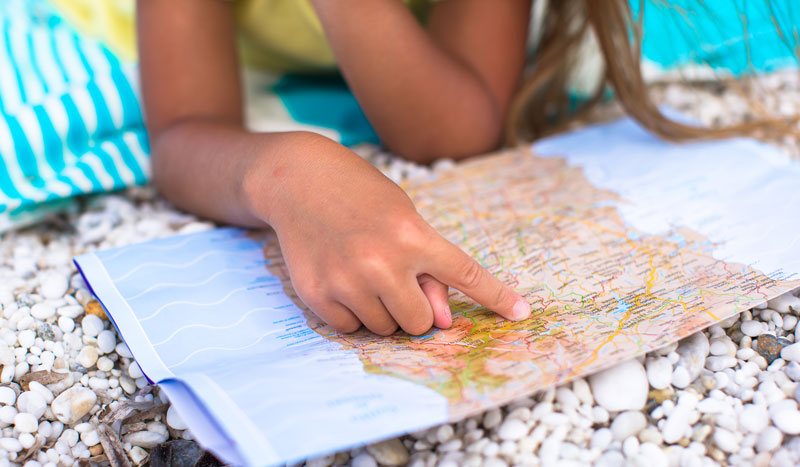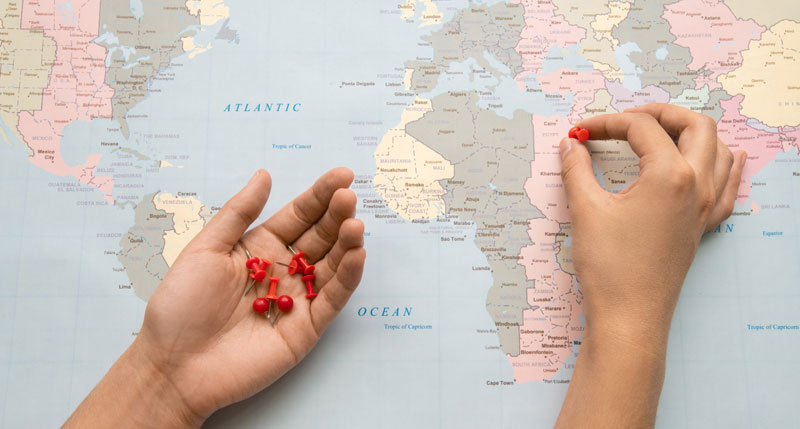How To Read Maps? What Do They Tell Us About Land And Water?
Map reading is the act of interpreting or understanding the geographic information portrayed on a map. Through map reading, the reader should be able to create a mental pathway of the real-world information by processing the symbolized information shown on the map.
There are different types of maps to choose from. You want to be sure that you have the right kind of map for your purpose. A tourist sightseeing map will be of no use to you if you’re in secluded parts of the mountains.
Here, given below, are few different kinds of maps:
Topographic Map: This details the terrain, roads, distances, and points of interest.
Road Map: A great help to have on road trips. GPS-free and extremely reliable.
Tourists map: Useful for city breaks. They show the attractions and points of interest around a city.
Along with the right type of map, you will also need to choose the right scale:
1:50,000: The most common scale to use while hiking is 1;50,000, which means that for every centimeter on the map, there are 50,000 centimeters in real life. Maps are broken into grids. Each grid measures to 2 centimeters which means that every box on the map measures up to 1 kilometer in real life.
1:25,000: These more detailed maps show features such as trees and rocks on the ground. These maps are scaled as every 1 centimeter is 25,000 centimeters in real life. Each box on the grid of these maps is measured as 4 centimeters which means that every box on the map covers 1 kilometer in real life.

There are also a few features on every map to be sure of and know well:
Legend: Gives a description and guide of the different features on the map.
Title: Tells you what area the map is.
Grid reference: Grid boxes with the first 2 or 3 digits being the x-value, and the last 2 or 3 being the y-value.
North Arrow: Tells you which way is north. It always points to the top of the map.
Scale: Tells you what the scale of the map is (1:25,000 or 1:50,000).
Now, there are certain steps to learn how to read a map:
Find where north is: Place your compass flat on your map, pointing towards the top and rotate yourself until the compass’ needle points north.
Finding your location on the map: When trying to locate your position on the map, it is most important to be able to identify your surroundings and relate them back to your map. It can be difficult to figure out your position from any grid reference so the ideal thing to do is to start from a grid reference that you do know. If you drove to your current location from some other place then it is advised to try and retrace your steps from the location you set off from. Look around for landscape features once you are sure of your location, these can be mountains, rivers, roads, etc.
Contour Lines: These are small black lines that wave around the whole map. Each contour line on a 1:50,000 scale map represents a rise of 10 meters above sea-level. Every 5th contour line will be slightly darker to make it easy to count when counting many lines.
CAROLINA’S SMITHSONIAN SCIENCE FOR THE CLASSROOM is a brilliant and efficient way to teach young children the skill of map reading especially in today’s digital age when so many people depend entirely on mobile connectivity and GPS. Students learn the patterns of land and water on Earth and how they can represent those patterns with models, including maps. Schools in Middle East, including Dubai partner with Carolina to deliver effective lessons through practical project-based methods.






Recent Comments